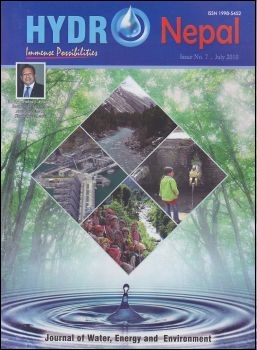Water Resources for Mutual Beneft - Nepal and India
DOI:
https://doi.org/10.3126/hn.v7i0.4232Keywords:
Storage projects, Food control, Regulated fow, Hydropower export, India, NepalAbstract
The huge water resources including hydropower potential of Nepal may be mutually beneficial to both Nepal and India. Storage projects need to be developed to utilize the monsoon season flows to have regulated flow with multiple benefits such as irrigation, food control, hydropower, etc. India will need an additional 200,000 MW of electricity by 2018. The cross border power trade will undoubtedly benefit both the countries. To exploit resources on mutually beneficial terms, we need to shift from "foreign policy" to "business mode," decreasing government engagements and increasing corporate relationships. Business to business initiatives will lessen any mistrust. Furthermore, water augmentation of the Kulekhani reservoir by pumping and constructing a high dam in the Jomsom area will significantly increase electricity generation in the existing plants.
Key words: Storage projects; Food control; Regulated fow; Hydropower export; India; NepalDOI: 10.3126/hn.v7i0.4232
Hydro Nepal
Journal of Water, Energy and Environment
Vol 7, July, 2010
Page: 26-29
Uploaded date: 31 January, 2011
Downloads
Downloads
How to Cite
Issue
Section
License
The copyright of the articles and papers published is held by HYDRO Nepal Journal.
The views and interpretation in this journal are those of author(s), and HYDRO Nepal does not bear any responsibility for the views expressed by authors in the journal.




